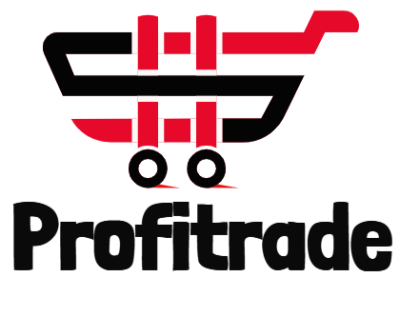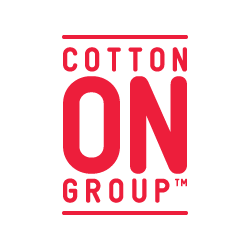MISSION
To manage the store and the team in order to maximise sales and gain customer loyalty.
DUTIES OF THE STORE MANAGER – Associated tasks
A. PEOPLE MANAGEMENT
1) To act as a role model for the management of the store team.
a. To guide each member of the team in all their tasks.
b. To motivate the team in their day to day work in order to maximise sales.
2) To organise and distribute tasks and positions to each member of the team.
a. To undertake the store plannings in an efficient manner.
b. To deal with all unforeseen situations in order to optimise the workforce.
3) To communicate actively with the team, according to requirements.
a. To hold daily meetings to explain the targets and give information for immediate application.
b. To encourage and prepare weekly meetings on sales targets, product information and other matters of interest for the team.
4) To participate in the recruitment of personnel in an active and optimal manner.
5)To ensure the development of the team towards a high level of knowledge and performance.
a. To ensure the correct integration and training of each employee.
b. To evaluate and encourage the progress and development of each employee.
6 )To ensure a good level of customer service in the team.
a. To ensure that each member of the team knows and applies the Mango Service Policy.
b. To manage and attend to customer requests and/or complaints displaying an exemplary attitude.
7) To detect the potential of each employee and ensure their development.
a. To be able to delegate in an effective and efficient manner.
b. To mentor the skills development of each team member according to their profile.
8)To ensure the optimal management of personnel administration duties.
a. To request and manage the recruitment of new employees.
b. To record and monitor all incidents – hours, absenteeism, holidays, etc.
c. To report and advise on all incidents in order to avoid potential problems or conflict.
9)To monitor and ensure the correct personal and professional image of the team.
a. To supply uniforms and ensure they are worn.
b. To advise on and explain the importance of personal image to each member of the team (uniform, make-up, hair, etc.).
10) To lead the team and correctly and actively manage potential conflict.
11) To ensure compliance with the regulations and the legislation.
a. To be familiar with the internal regulations and apply them.
b. To advise on all matters affecting the operation of the store with regard to employment legislation.
B. BUSINESS MANAGEMENT
1) To plan the required measures in order to reach targets.
a. To prepare the monthly targets and distribute them among the team members on a daily basis.
2) To analyse and review management indicators and costs in order to improve them.
a. To calculate and monitor the key store indicators – Conversion Rate (CR), Items per Receipt (IPR), Average Shopping Basket (ASB), etc.
b. To apply proposals in order to optimise them (Overall and Individual Action Plans).
3) To continuously monitor sales and customer service.
a. To continuously report to and motivate the team in order maximise sales.
4) To prioritise and, during busy periods, dedicate time to direct selling alongside the team.
a. To be able to advise customers and gain their loyalty.
b. To lead by example and act as a role model for members of the team.
5) To ensure the correct execution of administrative tasks.
a. To check that procedures are carried out in the established manner with regard to transport, checking merchandise, internal policy, etc.
6) To review and apply all instructions received (HQ, supervisor, etc.).
- To ensure strict supervision of the entire cash desk procedure.
- To optimise resources and try to minimise expenses e.g. optimisation of the workforce, suppliers, etc.
C. PRODUCT AND MERCHANDISING
1. To be familiar with the collection and maximise sales (initial order, entries, etc.)
a. To analyse (together with the merchandiser) delivery notes, out of stock items, etc.
2. To ensure and collaborate in the implementation of Merchandising standards.
a. To advise on the Merchandising cards and the display regulations.
3. To optimise selling space in order to obtain maximum profitability.
a. To know the profitability of furniture displays in the store in order to maximise sales.
4. To continuously ensure the correct replenishment of the store.
a. To monitor the different replenishment channels and optimise them.
5. To ensure compliance with merchandising and furniture display guidelines.
6. To produce stylings, silhouettes and combinations on a regular basis.
a. To participate in, advise on and implement merchandising changes in the store.
7. To control and manage stock (both in transit and in the stockroom) and inventories.
8. To ensure the correct end of season return (inventories).
9. To ensure compliance with the store image, maintenance and window dressing standards.
a. On a daily basis, to inspect the different aspects that affect the store image – cleaning, music, lighting, window displays, etc.
b. To carry out strict monitoring of suppliers and maintenance companies.
- To provide product feedback (his/hers and customers’).
ATTITUDE
- Communicates well and is persuasive.
- Shows initiative and decision-making/problem-solving ability.
- Leads by example and is capable of motivating the team.
- Acts quickly and is multi-disciplinary.
- Is tenacious and can deal with stress.
- Is enthusiastic, friendly, cordial and polite.
- Ability to listen.
- Prioritisation – optimal use of time.
- Self-motivating and self-critical.
KNOWLEDGE
- Analysis of management indicators.
- Customer Service Standard and Service Policy.
- Knowledge of the collection and awareness of fashion.
- Merchandising Standards.
- Cash register programme and Pathfinder operation.
- Employment legislation in the region.
SKILLS
- Leadership qualities – mobilises and motivates the team.
- Product awareness and commercial orientation.
- Organisation, management and planning.
- Able to analyse and offer solutions.
- Communicative and persuasive.
- Customer and image-oriented.
- Ability to adapt – energy and speed.
















